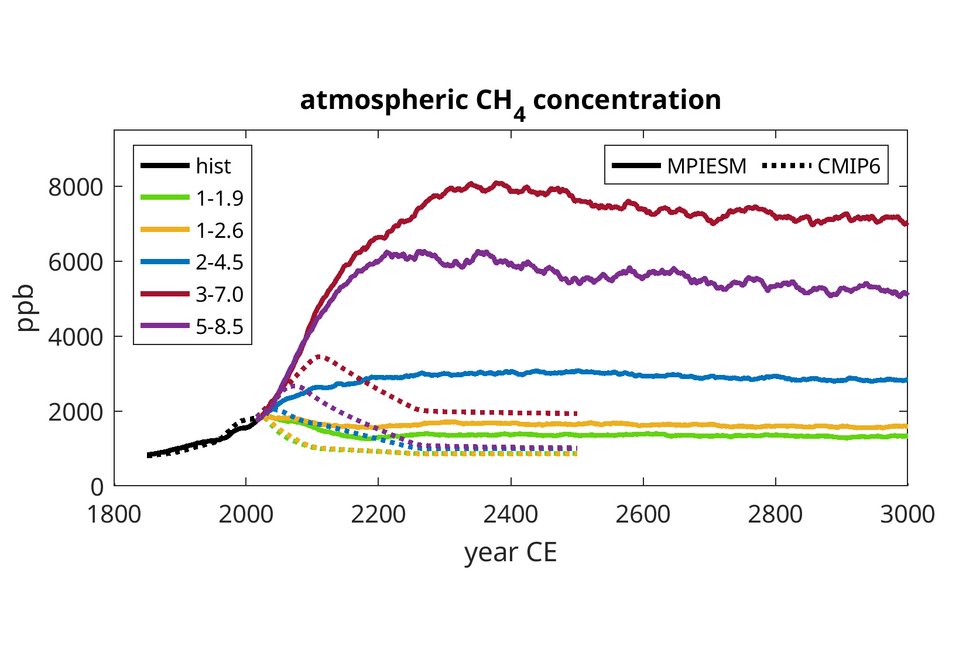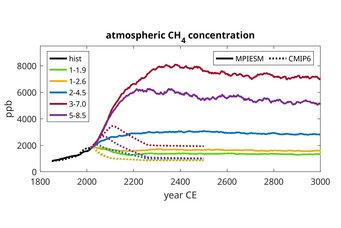Future methane concentration underestimated in climate change scenarios
The changes in methane concentration under future warmer climate conditions have been severely underestimated
In a new study in Environmental Research Letters Dr Thomas Kleinen and Prof Victor Brovkin, researchers at the Max Planck Institute for Meteorology (MPI-M), together with Dr Sergey Gromov and Dr Benedikt Steil, researchers at the Max Planck Institute for Chemistry (MPIC), showed that the changes in methane concentration under future warmer climate conditions have been severely underestimated.

Methane (CH4) is a greenhouse gas that has a global warming potential about 28 times greater than carbon dioxide. Its atmospheric concentration grows fast: It has increased more than 2.5-fold in comparison to preindustrial conditions. How long this growth will continue, and if there is a risk of overheating our planet therefore are important questions for future climate changes.
Therefore, Kleinen and colleagues investigated the possible future evolution of the climate system and the methane cycle in their study. They focused on natural methane emissions, from wetlands and a few other sources. They used a methane-enabled version of the Max Planck Institute Earth System Model (MPI-ESM) to investigate future methane concentrations under five different climate change scenarios and found that wetland methane emissions are much more strongly determined by CO2 and temperature changes than had previously been assumed for future climate scenarios. In particular, they found very large increases in natural methane emissions in the high warming scenarios, with emissions up to 4 times larger than hypothesized before. This is especially valid for the centuries after 2100 since the increase in greenhouse gases will continue until then and the total effect of the emitted greenhouse gases will lead to the full committed warming. Furthermore, they found that high natural methane emissions will continue for as long as the climate stays warmer than at present. Kleinen and colleagues looked at climate for the next 1000 years, and temperatures and methane concentrations in the high warming scenarios stay high until then and decrease only slowly.
In a previous study, Kleinen and Brovkin applied the same modelling system to climate states of the past, such as the last glacial maximum and the early Holocene, and found good agreement with evidence from ice core data.
Dr Thomas Kleinen: “We validated the model against the most recent methane budget assessments carefully, and the spatial distribution of emissions in the present-day climate, as well as the emission totals, compare very well indeed. The model also performs very well for climate states of the past, which gives us confidence in our results for the future.”
Prof Victor Brovkin: “Methane concentrations always grew in concert with warming in the past, providing a positive feedback to climate change. We find similar behaviour for the future, too. This additional warming is coming at the top of warming due to CO2 emissions.”
Dr Benedikt Steil: “Until now it has always been assumed that the anthropogenic methane emissions are much more important for future methane concentrations than the natural ones. Our results show that this assumption is wrong because wetland emissions are so strongly determined by warming.”
